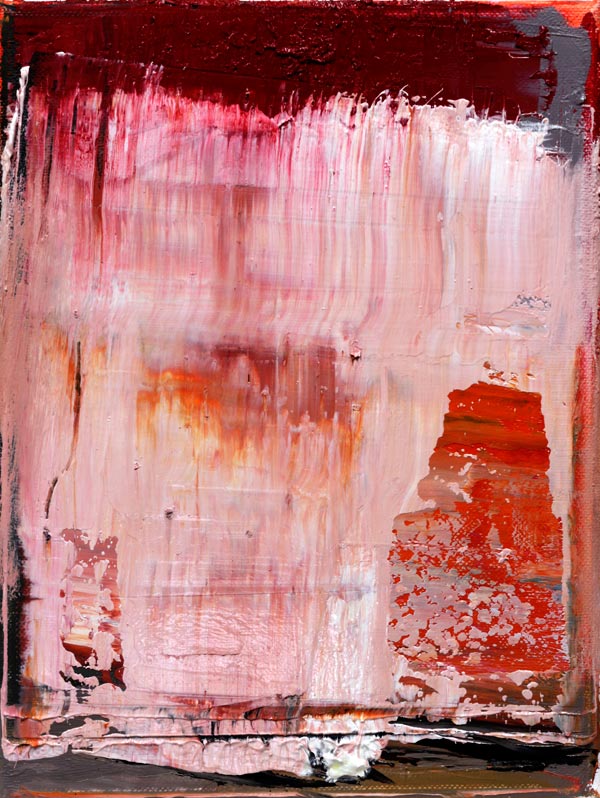the structures in the paintings
by Axel Plöger (2024)
My thoughts form a structure in which memories and ideas are interconnected. This reflection on the quality of structures itself follows a structure. These are mental frameworks that shape my consciousness—alive, growing, and changing—a network of interconnected thoughts. A present-moment network arises in my consciousness, one that I can grasp only briefly before it transforms again. Perception itself has its own emotional structures—deeper layers that resonate and are often surprisingly linked with thoughts.
In meditation, it is sometimes possible to experience these emotional-cognitive structures for a brief moment and vaguely perceive them as formations within my consciousness. However, my thinking only ever touches part of it, while I become aware of an immense network that I cannot logically follow. Feelings are perceptions, emotions are structures, networks—sticky and intertwined with thoughts. Thoughts, in turn, are structures. Concepts are consciously formulated structures that are two-dimensional in their possibilities but open to interweaving. Every noun describes a structure. I can perceive feeling and thinking as structures from which action arises. Structures overlap, interlink, and are experienced as present. They exist when I pause and do not react (from within the structure), but instead perceive the structure as part of my consciousness. I can choose to either engage with or alter this structure by recognizing it.
Poststructuralism understands structural action as a concept of consciousness. This opens up the possibility of critically examining and transforming structures. Even emotional structures with destructive, chaotic, or instinctual characteristics—such as anger, affection, hatred, and fear—can be experienced as structural formations. The key is always the moment of pausing. Instead of avoiding, I look directly: Which structure is guiding my actions right now?
In my painting, I have the opportunity to make structures sensually tangible. Thoughts are internal motives translated into color. Through this interaction with color, the physicality and materiality of structure emerge on the surface of the canvas. Thus, surfaces, rhythms, networks, organic forms, or figurative associations take shape. These are further developed in the process through layering, smudging, dissolving, and destroying structures.
My paintings arise from internal, emotionally-cognitive structures, making them visible. They become the subject of my art, my language elements, and my color spaces. These works are inner self-portraits of states of consciousness. They create immersive spaces of experience—complex hyperstructures that only connect in the present moment. The quality of my paintings emerges from the full attention I give to the act of painting. They are documents of a truly sensual process. The resulting works do not represent anything; they do not convey a message. At best, they reveal the present moment of my artistic activity—what happens between me and the canvas, the emergence between flow and reflection.
Theories of perception have always fascinated me. Particularly striking, given its age, is the Buddhist teaching of the five skandhas: form (rupa), sensation (vedana), perception (samjna), mental formations (samskara), and consciousness (vijnana). It is intriguing how many stages of conscious perception (for instance, of a painted image) precede awareness. In my work, I aim to stretch these preliminary stages as much as possible, lingering in the painting process and revealing its immediacy. This is where the concept of "flow" from musical and artistic performance also applies.
What does this mean for the painting process and the viewer?
We all act from within a structure. We are the way we are, or we try to change ourselves and not act according to our structure. As an abstract, non-figurative painter, I pick up a brush and begin painting based on a conscious concept, a decision. But then I work unconsciously, from within a structure. Lines, surfaces, rhythms—even structure-like forms and interweavings—emerge in the painting. I make my acting structure visible and materially tangible. Now it becomes an entity I can face. This structure, having emerged from within me, is now separate from me, an immutable document of what was just my reaction. It is no longer "me." With this newly formed shape, I continue to work, perceiving color spaces and bodies. I react to the painting, and a reciprocal process begins—a dialogue that repeatedly pauses and becomes aware of its own reactions.
As a viewer of the paintings, I experience the immediate physicality of an inner process familiar to me. Emotions and thoughts resonate; I can become aware of my own structural patterns and repeatedly link them to the materiality of the painting. I move within the visual structures, and I reflect.

